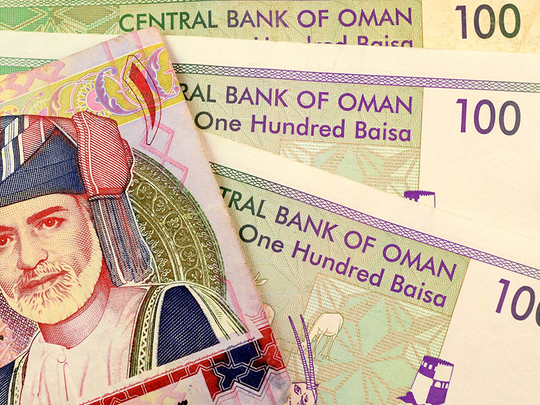
Muscat: Oman has the means to maintain its currency peg and has no plans to change it even though the decline in oil prices has hurt its finances, central bank Governor Tahir Al Amri said.
Oman’s gross foreign currency reserves, which stood at $19.6 billion (Dh71.9 billion) at the end of January, are enough to cover nearly nine months’ worth of imports, Al Amri said in an interview Tuesday at his office in the capital, Muscat. Oil remains the country’s biggest export, and most of the country’s revenue is in US dollars, he added.
“We are strongly behind the peg” despite pressures, Al Amri said. “We will try and make sure that we have ways and means of defending our fixed exchange-rate policy.”
- Tahir Al Amri | Governor of Oman’s Central Bank
The finances of the Middle East’s biggest non-Opec oil producer, like those of others in the six-nation Gulf Cooperation Council, were battered after the plunge in crude prices beginning in 2014. With income from exports falling sharply and the budget gap widening, the country borrowed heavily to finance imports and cover the sizeable outflows from foreign worker remittances.
As a result, government debt-to-GDP went from 5 per cent in 2014 to 41 per cent at the end of 2017, according to Al Amri.
Added taxes
To help offset the revenue shortfall, the sultanate raised corporate tax to 15 per cent from 12 per cent, increased fees on items such as passports, and lowered fuel and electricity subsidies. Taking advantage of attractive interest rates, Oman raised $6.5 billion in Eurobonds in January, its biggest sale on record. The country plans to impose value-added taxes (VAT) next year, the governor said.
Oman, which holds a strategically important position at the mouth of the Gulf, has pursued independent polices that sometimes put it at odds with other GCC states. Its neutrality has made it appealing as a facilitator.
The government is trying to make the business environment in Oman more attractive to both locals and foreigners, Al Amri said. New commercial companies and investment laws are in the pipeline, and other legislation, such as a bankruptcy law, are under discussion. The central bank recently expanded banks’ abilities to extend credit to the private sector. “There are a lot of initiatives to curtail red tape,” he said.
Oman didn’t scale back infrastructure projects already under way because it thinks they’ll have a positive impact on the economy, the government said in its bond prospectus in January.
Al Amri said Oman can secure enough funding to cover its external financing needs this year. Bloomberg Economics estimates these at $11.5 billion, made up of a $10 billion current-account deficit and $1.5 billion of debt maturing this year. In 2019, it may continue to draw down on the country’s sovereign wealth fund as a last resort, he said.
Expand trade
Al Amri said Oman is also in discussions with major international strategic partners to explore ways to deepen financial and commercial transactions. He didn’t identify those countries but said they were outside the Gulf.
Real gross domestic product (GDP) growth for 2018 is expected to be at least 3 per cent, according to the budget, which was based on an oil price of $50, he said. Only a small amount of a $10 billion 2011 grant offered by Saudi Arabia, the UAE, Kuwait and Qatar has been used to finance a few projects, Al Amri said.
“We need to work hard to accelerate the diversification measures. We need to make sure we start doing things differently,” he said. “We are not worried that is not going to happen.”












